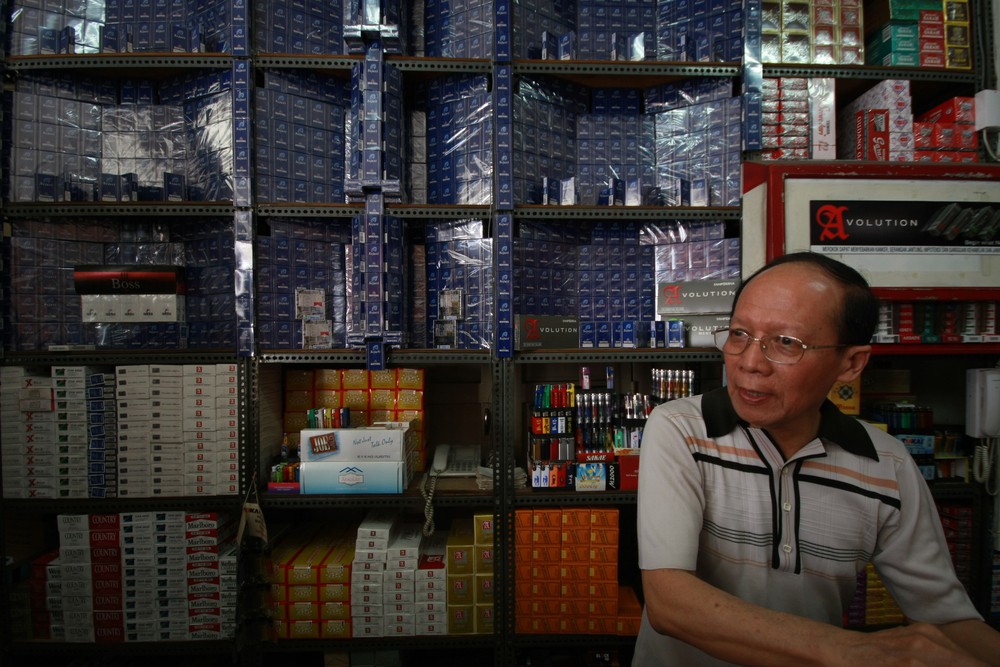ABOUT 10 percent of the world’s one billion smokers live in the member countries of the Association of Southeast Asian Nations (Asean). Indonesia and the Philippines have some of the world’s largest smoking populations. In the low and middle-income countries (LMICs) of Asean, more than 560,000 people died due to tobacco-related diseases in 2016 alone.
Even after more than ten years since the World Health Organisation (WHO) Framework Convention on Tobacco Control (FCTC) came into force, the poorer countries of Asean – Cambodia, Indonesia, Laos, Myanmar, Philippines, and Vietnam – representing about 80 per cent of Asean’s population, still have relatively weak to moderate tobacco control measures.
In terms of legislation, most of these countries have tobacco control measures that are in line with the FCTC. However, many of these interventions are not supported within their health systems, are weakly implemented because of lack of lack of political will, financing and human resources, or worse, are ignored by the tobacco industry.
SEE ALSO: Philippines: Nationwide smoking ban starts today, Govt urges public support
These countries have not fully and efficiently utilised tobacco taxes, despite decades of evidence showing it to be the most effective measure to reduce consumption of cigarettes. A pack (20 sticks) of cigarettes in these countries range from less than US$1 to around US$2.
Laos presents an interesting case in imposing tobacco taxes. Although the country has earmarked surcharge taxes for tobacco control since 2013, an existing 25-year tobacco license agreement with Imperial Tobacco restricted the government in imposing any increase on the tobacco tax. The result is that among the low and middle-income countries of Asean, only Vietnam spends the WHO-recommended US $0.11 per person on tobacco control.

A female office worker in neighbouring Thailand smokes a cigarette outside a restaurant in Bangkok. Source: AP
One critical health service particularly affected by low-level financing for tobacco control is smoking-cessation programs. Vietnam, Cambodia and the Philippines have all launched quitlines, but they suffer from limited facilities and resources to support people who would like to quit. For example, nicotine replacement therapy is still generally unavailable or inaccessible in the public health sector of the poorer countries of Asean – not even as part of smoking-cessation programs.
Aside from Indonesia, all Asean countries ban the sale of cigarettes to minors, although enforcement is an issue. The downside, however, is that not all of these countries require sellers or retailers to demand proof of age at point of sale. Several countries also still permit the sale of individual sticks or small “kiddie” packs (less than 20 sticks in a pack).
Even when bolstered by the support of the Bloomberg Foundation and the Bill and Melinda Gates Foundation, strong tobacco control remains elusive in the region. The main reason is the tobacco industry, which has proved to be a tenacious bully when it comes to the implementation of the WHO recommendations in the region.
So long as Asean countries provide breathing room for the tobacco industry, increasing numbers of smokers will continue to shroud the region in smoky cigarette haze. Meanwhile, Big Tobacco – Philip Morris International, British American Tobacco, Japan Tobacco and Imperial Tobacco – are acquiring many of the local tobacco industries in these countries.
As an example, Philip Morris International has entered into a joint venture with Fortune Tobacco, effectively controlling more than 90 per cent of the cigarette market in the Philippines. Philip Morris has also acquired Sampoerna – the largest manufacturer of kretek or clove cigarettes, which is the most common type of cigarette smoked by Indonesians.
SEE ALSO: Will Japan really get tough on smoking or is it just hot air?
With its vast war chest, the tobacco industry has also recently pushed for a strategy to promote ‘reduced harm’ products, such as e-cigarettes and ‘heat not burn’ devices, as a way to maintain their dominance in the Asean region.
Among Asean’s low and middle-income countries, only the Philippines has a code of conduct to prevent tobacco industry interference. This code covers the whole bureaucracy but is not strictly enforced. In fact, in the Philippines and Vietnam, the tobacco industry is still represented in health policy-making entities, and even participates in FCTC delegations. Cambodia, Laos, Myanmar and Indonesia still give preferential treatment to the tobacco industry through tax exemptions, incentives, privileges and benefits to operate in their countries.
Big Tobacco’s focus now is Indonesia, the only Asean country that has yet to ratify the FCTC. Indonesia remains a stronghold for both local and multinational tobacco companies. Over the past decade, Indonesia has made pronouncements about ratifying the FCTC but has yet to follow through, particularly because of economic factors expressed as strong opposition from its agriculture, trade and finance ministries.
Although almost all these countries have legislation imposing graphic health warnings that cover at least 50 per cent of cigarette packs, some are not even implementable because of the tobacco industry.

A man sells cigarettes in Bandung, Indonesia. Source: Muhammad Azham/Shutterstock
For example, Laos has required that all tobacco companies print graphic health warnings covering 75 per cent of cigarette packaging since 2016. Civil society monitoring has shown that Imperial Brands PLC subsidiary – Lao Tobacco Company Ltd and Lao-China Hongta Good Luck Tobacco Company Ltd – have yet to comply, even after the government has granted three extensions for compliance and implementation.
It is even worse in Indonesia where the government only requires that graphic health warnings cover 40 percent of cigarette packs, and still allows direct advertising, promotion and sponsorship, for example, of sporting events.
SEE ALSO: Big Tobacco is still king in Indonesia
To address the increasing burden of disease from tobacco-related diseases in the region, countries need more visionary leadership, stronger governance, and a commitment to health promotion based on smoke-free lifestyles. In 2016 alone, the people of Asean collectively lost almost 16 million healthy years of life due to smoking, accounting for about 10 percent of the world’s tobacco-related disability-adjusted life years (DALYs).
The socio-economic costs of the tobacco epidemic are growing in Asean. Low and middle-income countries in the region need stronger teeth in effectively implementing the FCTC and to clear the smoke and mirrors that the tobacco industry has skillfully placed in the region.
By Gianna Gayle Herrera Amul, a Research Associate on Global Health Policy at the Lee Kuan Yew School of Public Policy, National University of Singapore, and Tikki Pang of the Lee Kuan Yew School of Public Policy, former Director of the Research Policy & Cooperation department at the World Health Organization (WHO) in Geneva, Switzerland. Originally published on PolicyForum.net.





